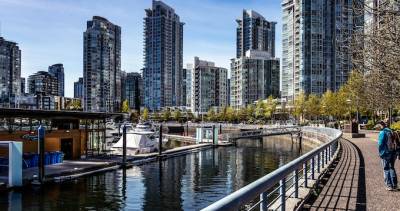Cycle highways seen as one of the future solutions to gridlock in Metro Vancouver
HUB Cycling hopes to get the conversation started on ways to increase use of electric-assist bikes across the region
Try to imagine what it would be like to go all the way from the North Shore to the Tsawwassen ferry terminal on a bicycle.
Sure, there are some very fit cycling keeners who can make this trip under current circumstances. But they are few and far between.
But what if there were a separated pathway where there would be no interactions with pedestrians or motor vehicles? And what if people were able to make this journey on an ebike?
That’s one of the possibilities outlined in a HUB Cycling report that will soon be released. It makes a case for “cycle highways” in Metro Vancouver.
Navdeep Chhina, director of campaigns and inclusion with HUB Cycling, told the Straight by phone that cycle highways have potential to offer tremendous benefits for improving the community’s health. Not only that, but they could also promote more tourism.
“What the study is looking at is what are the corridors between different municipalities?” Chhina told the Straight by phone.
HUB Cycling mapped segments across the region, stretching deep into the northeast sector and South Surrey. Chhina said that it’s conceivable that within Vancouver, a cycling highway could include the Arbutus Greenway, which could be part of the segment going toward the ferry terminal.
“A cycle highway would be a route where people don’t have to stop and they can go on a hard speed without having to worry about conflicts with people walking or people driving,” Chhina explained. “This is something that has been very successfully done in Copenhagen.”
Moreover, he noted, Copenhagen shares something in common with Vancouver: both cities are in regions that are comprised of many municipalities.
The lure of cycle highways increases with the rise of ebikes and other electric forms of active transportation. Chhina said that there are also more cargo bikes being sold to people who need transportation that can carry goods but who don’t want to buy a car. And Chhina believes that if municipalities provide more cycling infrastructure, it will encourage even more utilization of sustainable transportation that will not only keep the air cleaner but also cut down on traffic congestion.
“It becomes even more important with electric-assist bikes because they can go faster than the regular bikes,” he said. “It’s a lot more dangerous if they are on the roads with cars. So we need to move faster in reallocating our road space, especially when it comes to neighbourhood streets. We need to reallocate to walking and cycling.”
A 2020 UBC research project gives credence to what Chhina is saying if policymakers want to encourage more people to use ebikes. Jimin Park, a transportation planner at Watt Consulting Group, was part of a team that studied barriers to ebike use when she was a master’s student in the UBC School of Community and Regional Planning.
The university asked nearly 400 staff and faculty to try an ebike for 24 hours. The study found that 43 of them ultimately rented an ebike for 24 hours and 17 ended up purchasing discounted ebikes. This was not an impressive number if the goal is to get more faculty and staff to commute via ebike.
“In our focus group, we found that lack of separated bike paths was the greatest barrier,” Park told the Straight by phone.
The next biggest barrier was the lack of infrastructure on campus, whether that was high-quality parking or charging capabilities. The third biggest barrier was cost—ebikes can sell for $2,000 and there’s not a deep secondary market of used products.
The group of researchers had four recommendations. The first was to increase the quantity and quality of bike parking infrastructure on the UBC campus. Secondly, they urged the university to provide “high-quality, integrated end-of-trip facilities on campus”. The third recommendation was for financial incentives for faculty and staff to buy ebikes. And, finally, the researchers encouraged an education and awareness campaign on campus.
Park believes that the barriers to ebike use on campus likely mirror those in much of the region. Then there’s the issue of faster electric-assist bikes operating in the same separated cycling lanes as old-fashioned pedal-power bikes. Park said that she’s noticing more vehicles of varying speeds when she’s out on her bike in places like Stanley Park.
“The biggest thing as a transportation planner I would recommend is wider separated facilities,” she said.
Chhina also pointed out another glaring public-policy issue related to ebikes. And that’s the lack of financial incentives from senior levels of government.
“There is no rebate to buy electric-assist bikes but you get rebates to buy expensive electric cars,” Chhina said. “That is not equitable. If you’re giving rebates on cars, give rebates on bikes.”















Comments